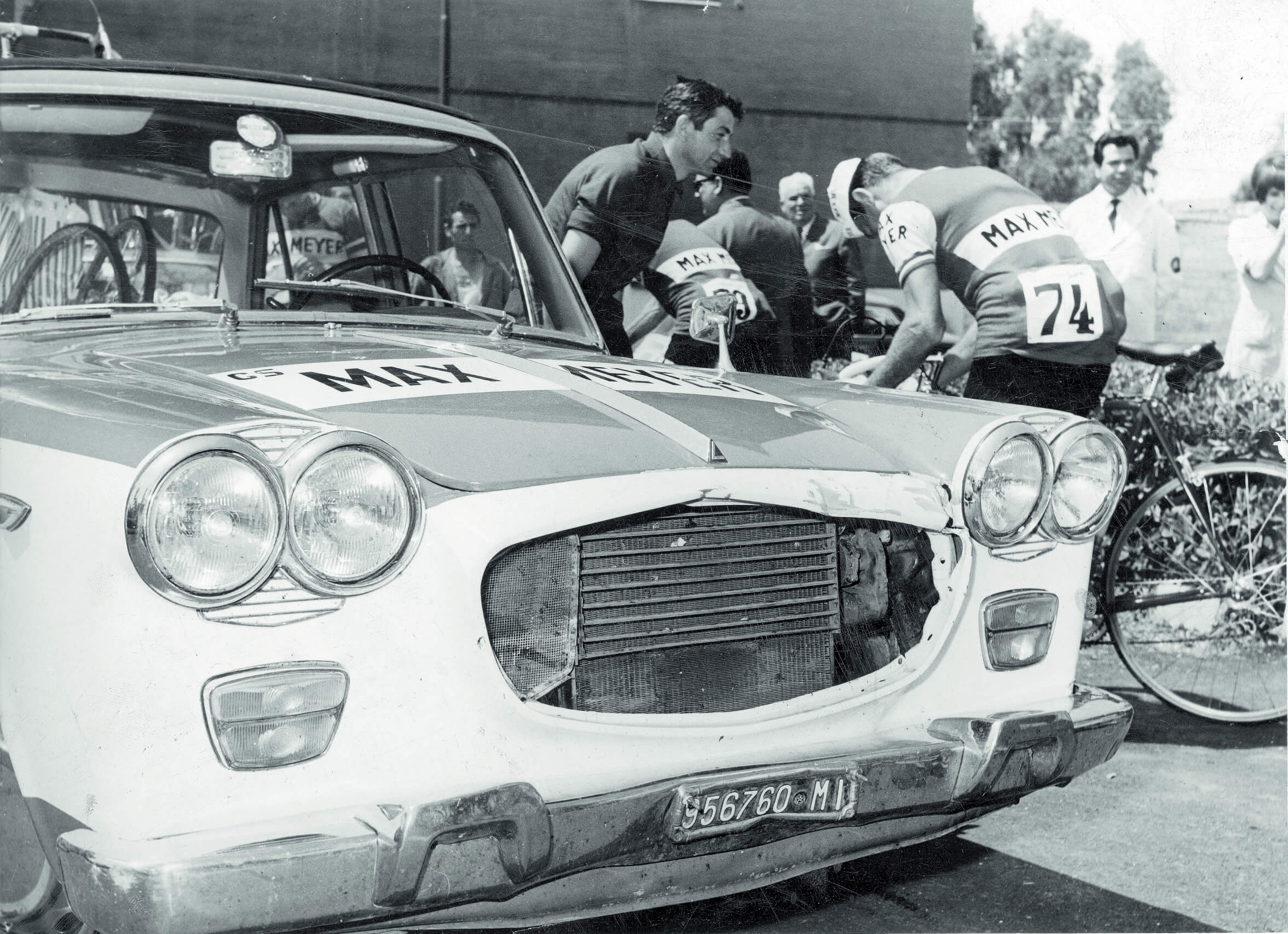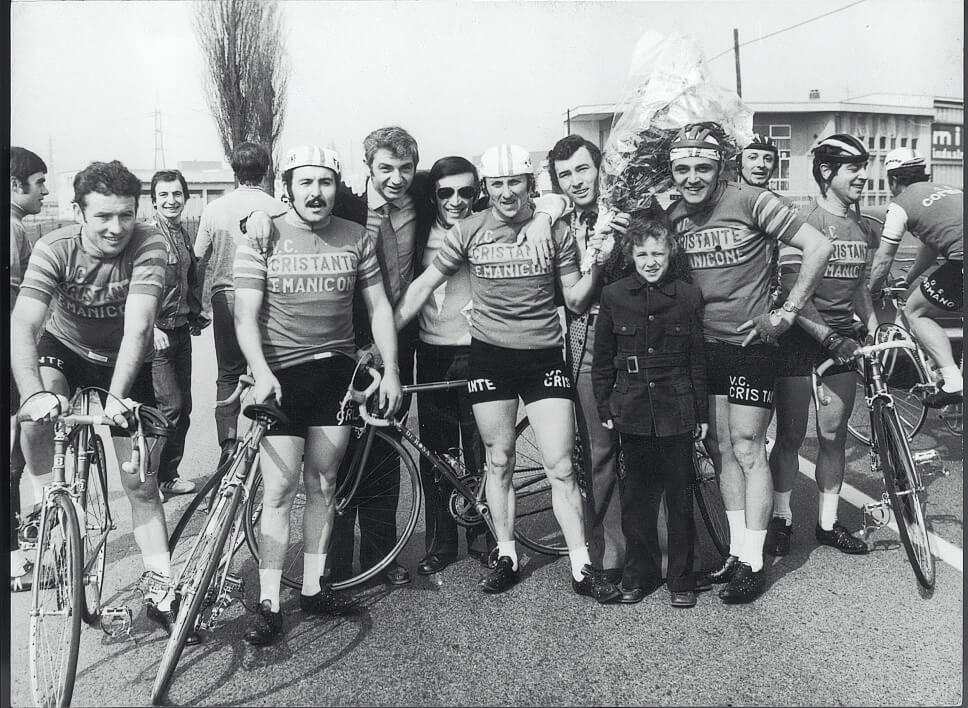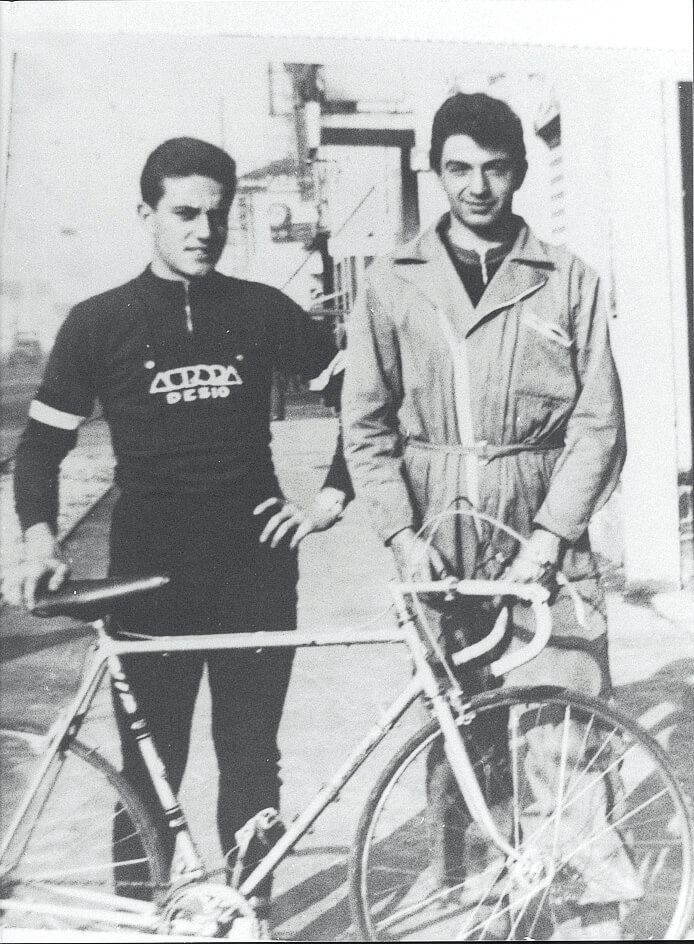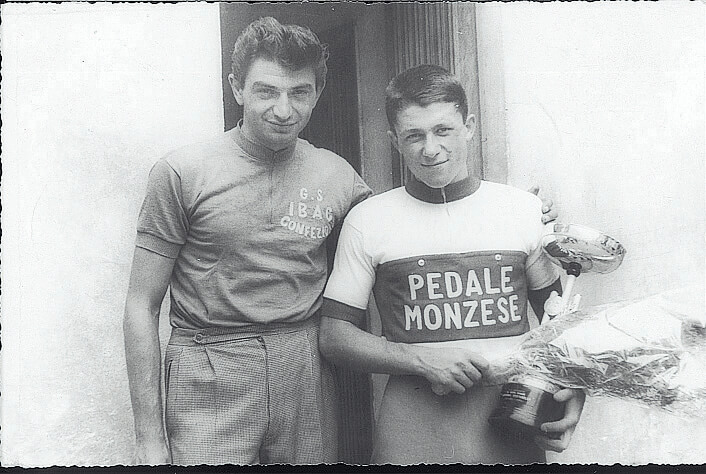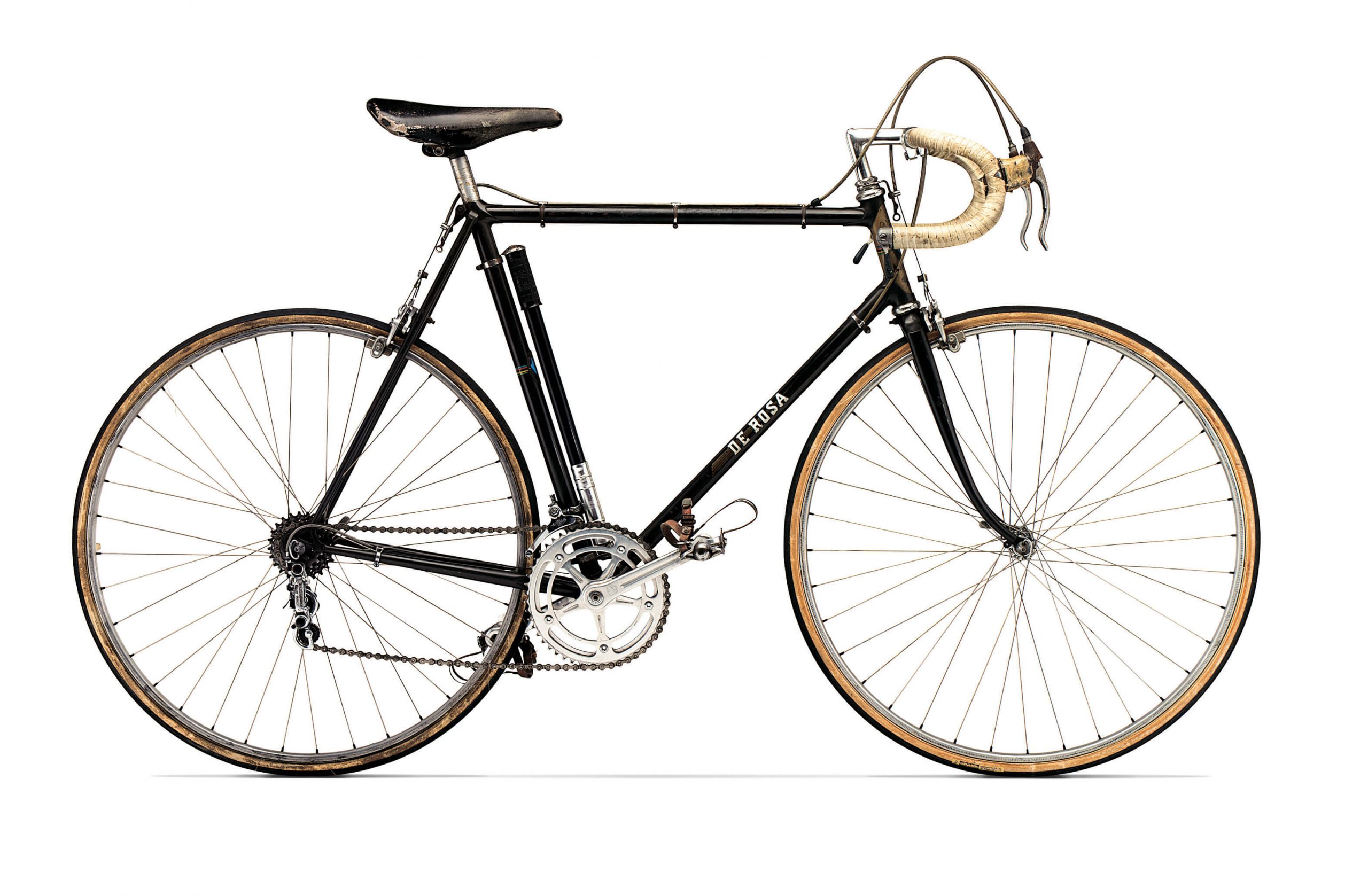De Rosa heart
"I AM A MAN WHO GOES STRAIGHT TO THE POINT"
I am a man who goes straight to the point. And, by force of habit, I never look back and count the years I have spent making frames. I prefer to look ahead, because after half a century, I am still convinced that the bicycle has room for improvement. And, just has I have done up till now, in the future too I want to contribute to the evolution of this fascinating vehicle, which at the same time is so simple and so complicated.

70: the redefined bicycle
A 730 gram frame, lightweight, elegant, aerodynamic. 22 months from idea to development with obsessive attention to every single detail. The design is signed by Pininfarina, a solid all-Italian partnership. Heart and emotions, without compromise. The result: the most advanced De Rosa bike of all time.
THE BIRTH OF ANIMA, THE BIKE ABLE TO COMBINE TRADITION AND FUTURE VISION
A single word chosen to express the result of titanium processing, which has represented the excellence of De Rosa for over 25 years. Anima is born from here, from the desire to translate the vision and the frame culture of De Rosa into a product. The first De Rosa titanium bike that use Campagnolo 12
SK PININFARINA
From two Italian excellences born an exclusive road bike, very light and designed by the two historic houses with new technologies and exclusive materials: De Rosa and PININFARINA.
THE BIRTH OF PROTOS, THE RACING BIKE
The bike still used today by the De Rosa teams, racing by its nature. Light and reactive, for complete riders ready to compete on any ground.
BLACK LABEL, THE PERSONALIZATION AT ITS FINEST
The 60th anniversary is celebrated with the publication of the book "Sixty" in 2 versions, Italian and English, which tells and summarizes the story of De Rosa brand. In addition the Black Label line is launched. 4 models with the 4 materials of the De Rosa history revisited in an innovative way.
THE MONOCOQUE FRAME
The construction of the frame undergoes an important turning point with the construction of the monocoque frames that simultaneously contribute to containing the weight and favoring performance for appreciable downhill reactivity. The KING3 is born, the third version of the frame that more than others represented the successful result of research and development in the company: the carbon used -K1- is the highest quality fiber used to the best of its potential. The KING3 receives accreditations in Italy and abroad: these are the years of Di Luca, another important rider for his sensitivity and collaboration in his improvement. Carbon conquers the market and De Rosa is among the few companies to maintain production on the four materials.
THE 50TH ANNIVERSARY
The ascent is unstoppable. On the occasion of the company's 50th year, De Rosa makes the Cinquanta, a celebratory frame that arrives on the market with the brand of KING X-light. The era of the modular frame begins: five modular monocoque pieces. The frame thus becomes full carbon and the seat tube section increases to 35 mm. Weights start to fall: a medium-sized frame reaches the threshold of 1,000 - 1,100 grams but De Rosa knows that the improvement in uphill performance can not be separated from safety on the way down. The exasperated search for a "target weight" goes alongside the research on materials and the construction of a frame that gives greater stability and handling. The KING X-light is chosen by Savoldelli, Garzelli, Tonkov. During the last races, Protos (Prototype) makes its debut with which the two riders win some stages in the Giro d'Italia.
THE CARBON
Danilo and Cristiano have learned that evolution is born on the road, the novelties are in the minds of those who ride, in the sensations and desires of those who ride the bike from the saddle. From personal experience they understand that the turning point will be carbon. The new millennium is born with the KING which embodies the De Rosa philosophy of the "Customized" frame. With the improvement of resins and bonding, carbon becomes for De Rosa the ideal material with which to pursue its company head-line that makes its "one-to-one" "tailor-made".
The aluminium
Aluminum is the new material: already in 1994 Danilo, who ride the Gran Fondo and builds the bikes, senses that there is a desire for new materials and something different in bicycle world. The frame starts to change because the tubes of section are larger and allow different graphics that give space to emotions and colors. Thus began the rise of this metal, technically versatile, light and reactive that allows high performance. The Merak becomes the frame "testimonial of a technical and emotional change": several successes with Casagrande, that achieved the second position to the Giro d'Italia, Pellizzotti and Caucchioli. The new millennium starts with the victory of Vainsteins and the 2000 World Championship is marked by Merak. The frames are made of steel, titanium and aluminum: they are known and mature materials. The latest generation forks are made of carbon, a young material with potential to emerge.
THE TITANIUM
De Rosa chooses to use titanium: material for the chosen few, represents since then the material for connoisseurs. Strong as steel and light as aluminum, Doriano gives it shape with all the processing difficulties involved. A De Rosa in titanium is the official bike of Team Gewis contributing to the successes of Argentin, Furlan, Berzin and Ugrumov. The bikes of the heart is on the podium of all the classics: Milano-Sanremo; Liege-Bastogne-Liege; Freccia Vallone; Giro d’Italia; Giro di Lombardia; Tour de France.
THE PERSONALIZED BIKE
TIG welding has its debut: using pipes of different sections allows De Rosa to fully realize its "personalized" bikes, realizing his construction philosophy. These are the years of Moreno Argentin, Gianbattista Baronchelli.
THE BIKE OF EDDY MERCKX
For the first time the company marks the bikes of a Professional team with the “Heart": it happens with the green bikes supplied to the G.B.C. in 1973 with Panizza, Francioni and Turrini. De Rosa continues to build for several professionals: in '73 he arrives at the Molteni as an official mechanic of Eddy Merckx and with him begins a professional partnership without equal: Merckx is demanding and his sensitivity as a rider helps Ugo to understand where to improve the bike. In '76 Ugo builds for Francesco Moser (who with those bikes wins three Paris-Roubaix) and in the Giro d’Italia 74 on a hundred riders, eighty ride on frames built by De Rosa (although not always marked with the heart).
DE ROSA IN THE PELOTON
At the end of the 1960s, the frames crossed national borders: in Europe, amateurs and professionals began riding on De Rosa bikes and, from there to a few years, the “Made in Cusano Milanino" frames crossed European borders. During the decade there are several riders who start to choose De Rosa as a builder: Ugo builds for Gastone Nencini's Max Mayer, in '69 begins the collaboration with Gianni Motta that will last throughout his career, as well as that with Eddy Merckx. These are the years in which Rick Van Looy won the world championships: De Rosa is his mechanic and follows him in the team car.
THE BIRTH
"Nothing extraordinary is ever born by a formula but by imagining what is not there and do it."
As a young boy, Ugo De Rosa developed a passion for bicycle racing and advanced through several ranks at the amateur levels. In technical school he completed studies in mechanics and engineering and became interested in the science of the bicycle itself.
Ugo De Rosa’s first job was in the workshop of his Uncle where he built and repaired bikes. Ugo opened his first shop and commenced the manufacture of racing bikes in 1953. With his experience in racing, he understood what it took to build a true racing bicycle and his reputation began to spread among the amateur racers in Milan.
The quality of his work quickly developed a following amongst amateur racers and in 1958 Ugo De Rosa was asked to build a bike for Raphael Geminiani for the next Giro d'Italia. Following on from this initial interest, De Rosa bikes became a fixture in the professional peloton of the 1960s.


